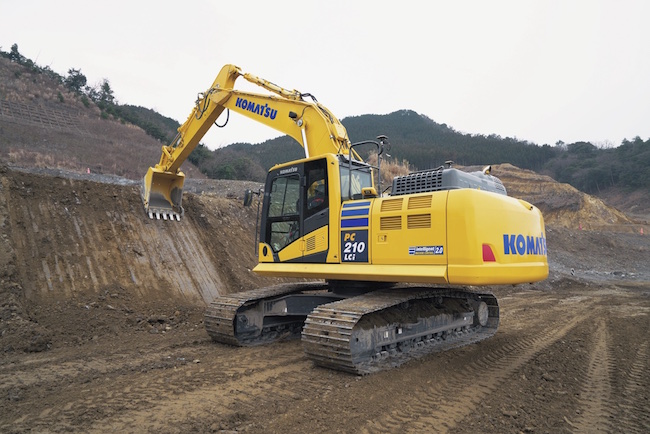
The road to autonomy: Advances help equipment better mimic live operators
By Jacob Stoller
Equipment Equipment Technology
Advances are improving how earthmovers react to better mimic live, experienced operators. PHOTO: Komatsu
Equipment vendors have dazzled us recently with high resolution Star Wars-like videos of driverless earth moving machines going through their paces. The hope is that such technology, already proven in mining, will soon help ease the growing shortage of skilled equipment operators in the construction industry.
Construction sites, however, present machines with considerably more variability than mines, and consequently, the dream of fully automated excavating and earth moving operations is, vendors say, at least five years away. On the other hand, autonomy is not an all-or-nothing proposition — contractors can benefit today from some significant advances.
“An autonomous car picking you up from your home and taking you to a store and back is not happening overnight,” says Luca Delgrossi, head of technology for Volvo Automation Solutions, “but for construction, I think that news looks much much better. With the technology we have today, we are able to overcome many of the problems.”
Volvo, for example, now offers a driverless 15-tonne-capacity electric hauling truck that automatically travels to a station when it’s time to recharge. What’s significant about these vehicles is that they interact safely with manually-operated wheel loaders, providing a level of interoperability that will be key as more autonomous equipment shows up on job sites.
“There will be a day when the wheel loaders will also be automated,” says Delgrossi, “but the important thing is that today, we already have a collaboration between a manually operated machine and an automated machine. And the automated machine is designed and operates in a way that makes it completely safe for the human operator operating the wheel loader to be around that autonomous machine.”
Machines are also getting much better at autonomous excavation. Automated control on dozers is nothing new, of course — what’s changed is that improved automation has extended this control to many more earth moving scenarios.
“Because of the sensors that we’re placing on the machine,” says Michael Salyers, senior product manager at Komatsu America, “we’re able to determine what’s happening with the body of the machine whenever the blade of a dozer loads up, or how the machine responds when it has a load of material or hits a very hard area like some rock. So the machine can mimic what an experienced operator with years of experience does.”
This higher sensitivity means autonomous control systems are no longer limited to finished grading, but can take on tougher digging operations. Consequently, on a typical shift, autonomous blade control can be active 80 per cent of the time, as opposed to the 10 or 15 per cent that was previously possible in many cases. This frees the operator to engage in value-added activity such as coordinating with trucks and planning the sequence of digging operations.
IMPROVED INFORMATION SYSTEMS
Another area of progress is the handling of complex instructions. In a video released in 2019, for example, Doosan Infracore demonstrated an autonomous excavator working from a multi-layer drone survey. Artificial intelligence was a key component — as the narrator notes, machine learning allowed the control system to be trained directly experienced operators.
“The technology is here today that allows equipment functions to be autonomous,” says Aaron Kleingartner, product and dealer marketing manager for Doosan Infracore North America. “The intelligence level the equipment needs to be truthfully autonomous will be what changes the game over the next decade.” Creating strong links between the work in the field and 3D BIM models will be key to this progression, Kleingartner notes.
Intelligent equipment will also provide better information for decision makers. Site managers will be able monitor progress in real time and prioritize tasks accordingly, or a control system might gather evidence that the conditions on the ground differ from what’s specified in the contract, documenting a case that extra compensation is justified.
“That data flow is becoming more and more commonplace,” Salyers says, “where we can take information being collected by the machine, bring it back in the office and see it in real time.”
That rapid exchange of data is expected to increase dramatically when 5G cellular technology becomes widely available on Canadian job sites.
THE ROAD AHEAD
While equipment that is completely autonomous will appear only gradually on construction sites, some of the toughest technical challenges have already been met, leading to some promising business cases.
Deployment of emerging solutions won’t solve construction’s labour shortage overnight, but it can demonstrably improve the productivity of existing skilled workers. It can also help contractors attract younger, increasingly tech-oriented workers to the profession.

Jacob Stoller is principal of StollerStrategies and a regular contributor to On-Site
This column first appeared in the March 2021 edition of On-Site. Click here to read through the whole issue.




